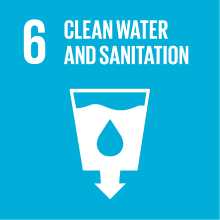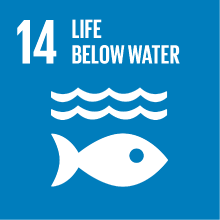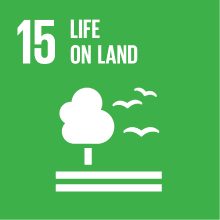MICROBIOLOGY - LAB
- Academic year
- 2021/2022 Syllabus of previous years
- Official course title
- MICROBIOLOGIA - LABORATORIO
- Course code
- CT0369 (AF:360947 AR:189526)
- Teaching language
- Italian
- Modality
- On campus classes
- ECTS credits
- 0 out of 6 of MICROBIOLOGY
- Subdivision
- Class 1
- Degree level
- Bachelor's Degree Programme
- Academic Discipline
- BIO/19
- Period
- 1st Semester
- Course year
- 3
- Where
- VENEZIA
- Moodle
- Go to Moodle page
Contribution of the course to the overall degree programme goals
Principal educational objectives of this teaching are: 1) to develop the ability to identify and discern the different microorganisms depending on different colonization environment; 2) to stimulate a systemic approach in the determination and resolution of degradation phenomena originating from biological attack; 3) to encourage for a transversal and multidisciplinary approach in framing possible and useful intervention methodologies; 4) to provide theoretical scientific basis for an appropriate experimental approach, both with classical and advanced technologies; 5) to know how to process and evaluate the experimental data collected, in order to formulate the most appropriate line of intervention and management; 6) to instil a precise and proper use of scientific language.
Expected learning outcomes
1.1. To know the morphological features characterizing the different microorganisms for their recognition.
1.2. To know the elements characterizing the physiology and the behaviour expressed by the different microorganisms in a particular colonization site, depending on its chemical-physical characteristics, in a specific environmental context.
1.3. Understanding the best intervention strategy, both for a potential use of microorganisms and for their removal, based on the biochemical-functional characteristics expressed site-specifically by the microorganisms.
2. Ability to apply knowledge and understanding
2.1. Knowing how to recognize microorganisms and their interactions.
2.2. Knowing how to frame the abiotic elements and environmental factors that influence the establishment of a microbiotic colonization process.
2.3. Being able to propose an intervention strategy, taking into account the chemical-physical properties of the matrices involved, to better manage a colonization process.
3. Ability to judge
3.1. Knowing how to interpret, critically evaluate and discuss the results of experimental analysis, to identify and characterize microorganism’s processes, in particular focusing the dependence on the type of rooting matrix.
3.2. To develop the ability to frame the various chemical-physical-biological-environmental information collected for the most real definition of the (micro)environment and the most suitable and sustainable intervention.
4. Communication skills
4.1. Being able to communicate the knowledge learned and the results in a coherent and rigorous manner, using an appropriate scientific language.
4.2. Being able to interact with the teacher and with the classmates in a respectful and constructive way.
5. Learning skills
5.1. Being able to take notes, showing autonomy in the identification of the salient aspects of the concepts expressed in class and of the focal points of laboratory experiments.
5.2. Being able to search and use reference texts and bibliography.
5.3. Being able to explain the theoretical topics with the ability to contextualize
Pre-requirements
Contents
In relation to the educational objectives and the expected learning outcomes, we intend to simulate a diagnostic /analytical path. The sessions will therefore be organized as follows:
- The microbiology laboratory: laminar flow hood, autoclave, microscopes (optical, stereo and SEM), incubators; dedicated glassware (Petri dishes, types of loops, containers and bottles from microbiology). Agarized and non-agarized culture media. Standard, elective, selective, differential media.
- Working in sterile conditions: methods of sterilization of instruments/materials. Sterilization interventions. Safety conditions for the operator.
- Indoor and outdoor microbiological sampling, active and passive. Calculation of indices.
- Preparation of culture media suitable for the specific finding on the single finding.
- Microbiological sampling: invasive and non-invasive techniques.
- Inoculation techniques on agarized and non-agarized media.
- Qualitative and quantitative verification of UFCs: counting, macroscopic recognition of the different UFCs, calculation of indices, compilation of operator-tables.
- Biofilm and patinas: training, study and removal.
- Preparation of fresh slides; preparation of fixed slides. Staining techniques.
- Gram staining with theoretical elements suitable for reading the slide.
- Practical elements for the use of the optical and stereo microscope.
- Microscope observation of microorganisms (Bacteria, Fungi, Lichens, microalgae). Use of microbiology manuals for recognition.
Referral texts
To deepen the topics covered:
- M.T. Madigan, J.M. Martinko, K.S. Bender, D.H. Buckley, D. A. Stahl Brock. Biology of microorganisms. Pearson Learning Solution.
- S. Donadio, G. Marino. Microbial biotechnology. Ambrosian Publishing House.
- P. Barbieri, G. Bestetti, E. Galli. Microbiologia ambientale ed elementi di ecologia microbica , CEI-Casa Editrice Ambrosiana, Milano
Assessment methods
Accuracy degree of the answers and ownership of used scientific language will contribute to the positive outcome of the test. Active participation in the lessons will be considered a positive evaluation element.
Type of exam
Teaching methods
There is also a practical part of laboratory experiences, aimed at verifying the learning acquired and showing methods and techniques in vivo.
Further information
Accommodation and Support Services for students with disabilities or specific learning disorders: Ca 'Foscari applies the Italian Law (Law 17/1999, Law 170/2010) for support services and accommodation available to students with disabilities or with specific learning disorders. In case of motor, visual disability, hearing or other disabilities (Law 17/1999) or a specific learning disorder (Law 170/2010) and support is needed (assistance in the classroom, technological aids for exams) o individualized exams, material in accessible format, notes collection, specialized tutoring to support the study, interpreters or other), contact the Disability and DSA office: disable@unive.it.
SUSTAINABILITY '
• 1 CFU: lecture notes and materials for in-depth analysis and online self-assessment.
• 1 CFU: course contents dedicated to deepening biocide use with moderate impact both on environment and human health, especially when used in indoor environments; furthermore, in particular, by considering the use of natural products and/or by causing primarily metabolism/reproduction/ecology disturbance.
2030 Agenda for Sustainable Development Goals
This subject deals with topics related to the macro-area "Natural capital and environmental quality" and contributes to the achievement of one or more goals of U. N. Agenda for Sustainable Development



